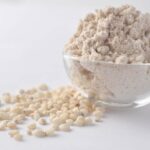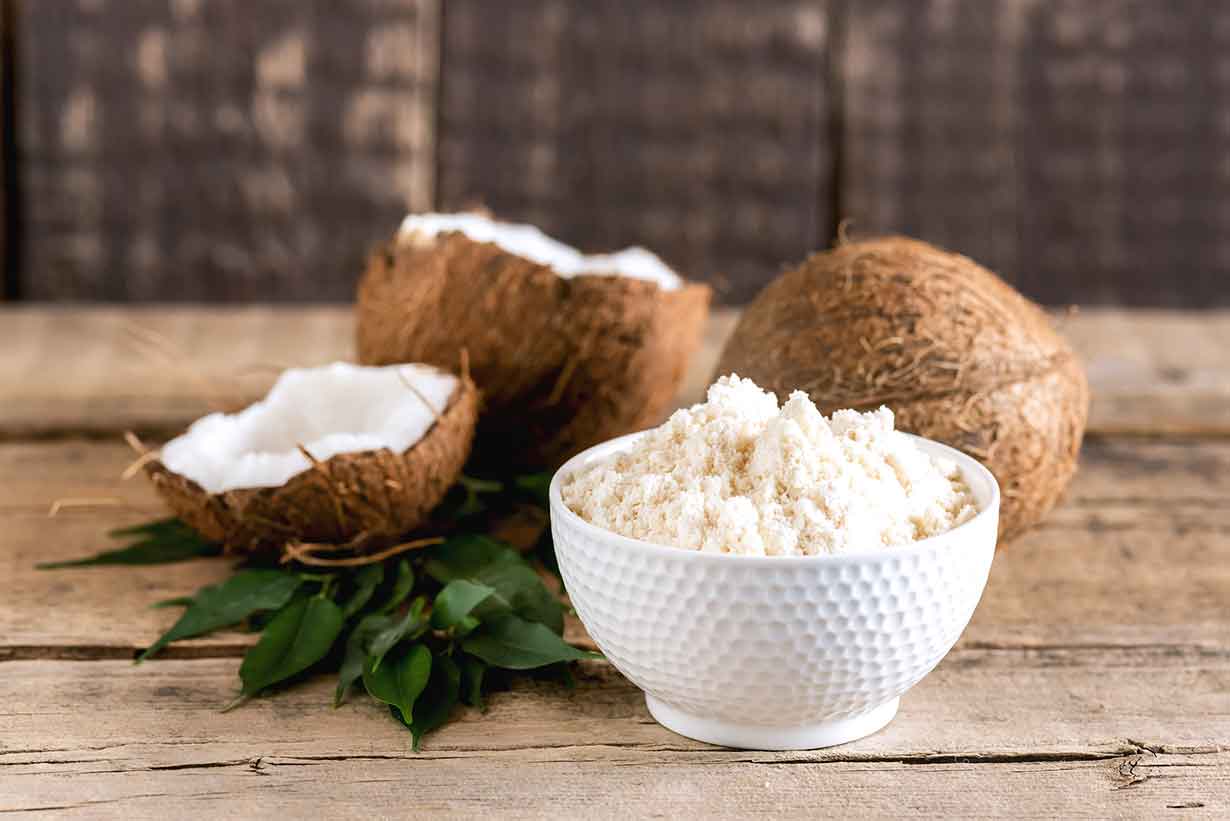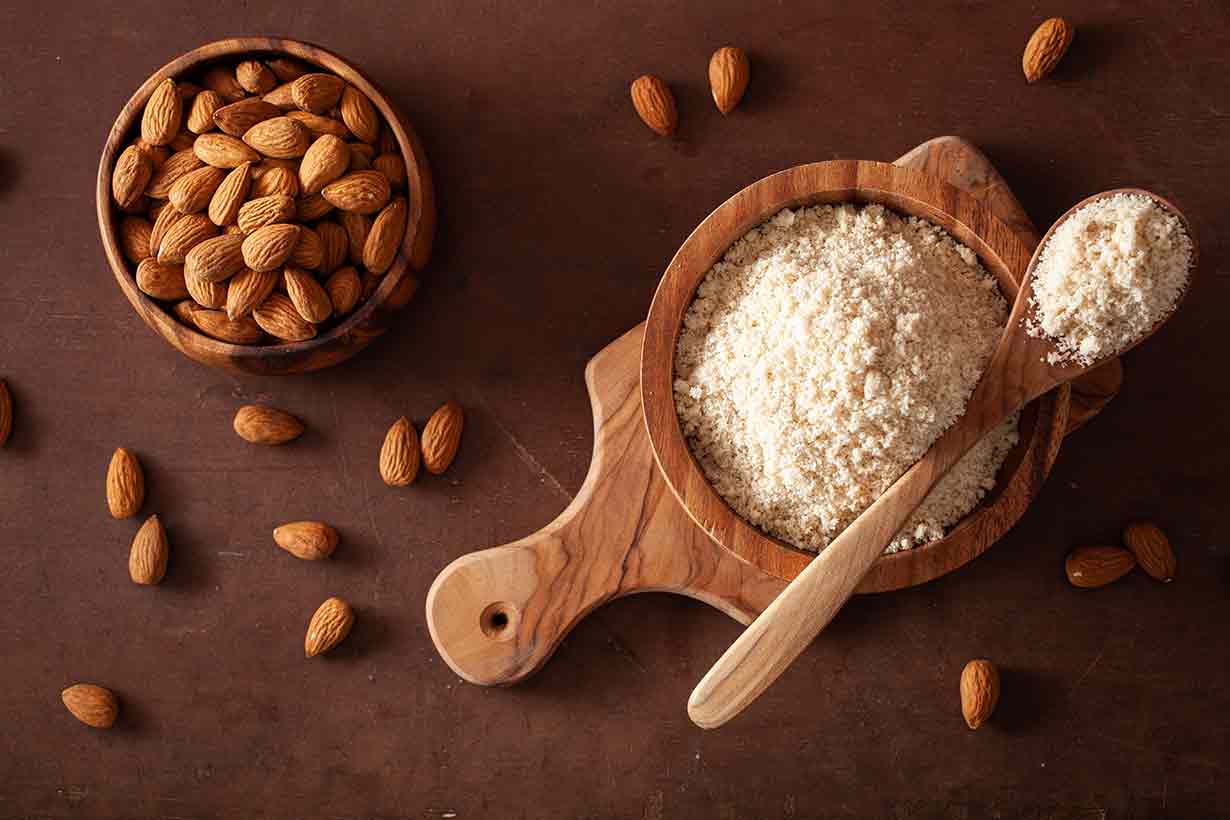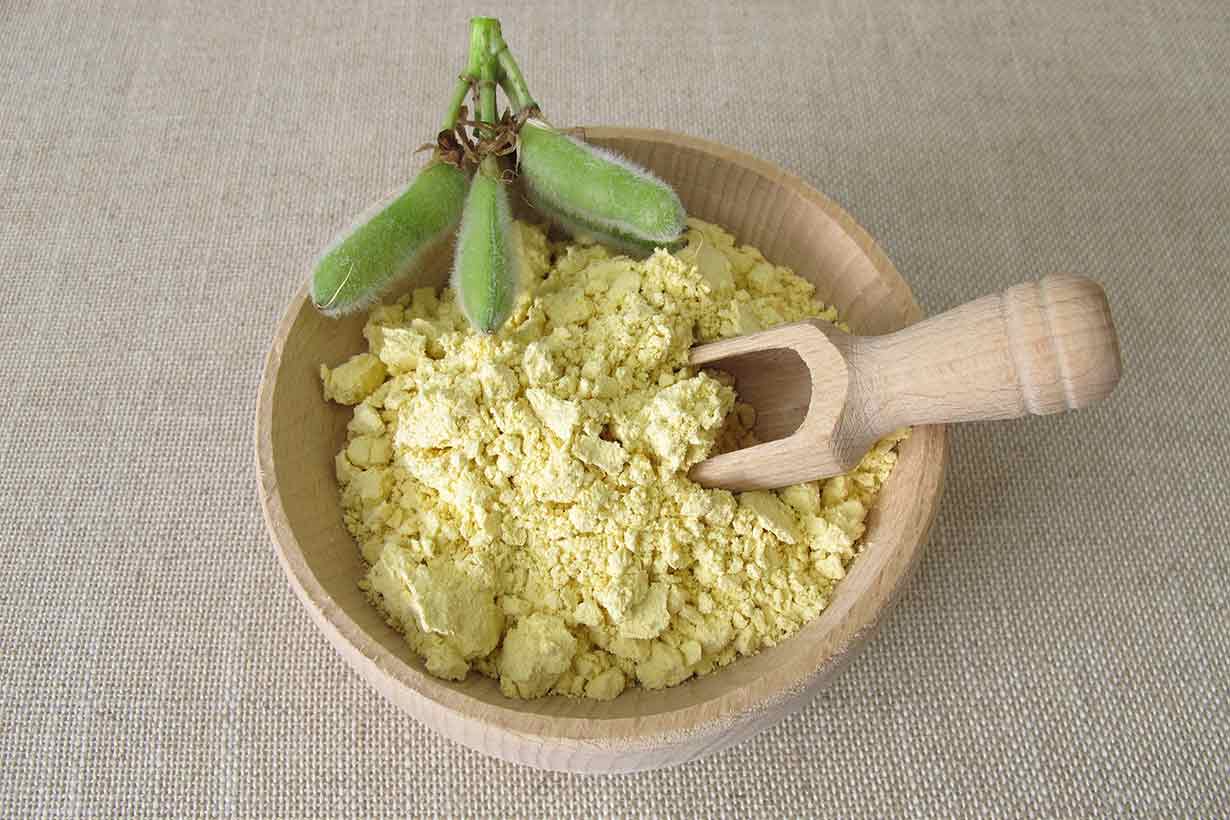Kamut Flour: What Nutrition Benefits Does This Ancient Grain Offer?
Kamut flour is a nutrient-rich flour alternative to regular wheat flour, believed to offer potential health benefits.
In this article, we will examine what kamut flour is, delve into its nutritional profile, and assess whether it has any noteworthy advantages.
What Exactly Is Kamut Flour?
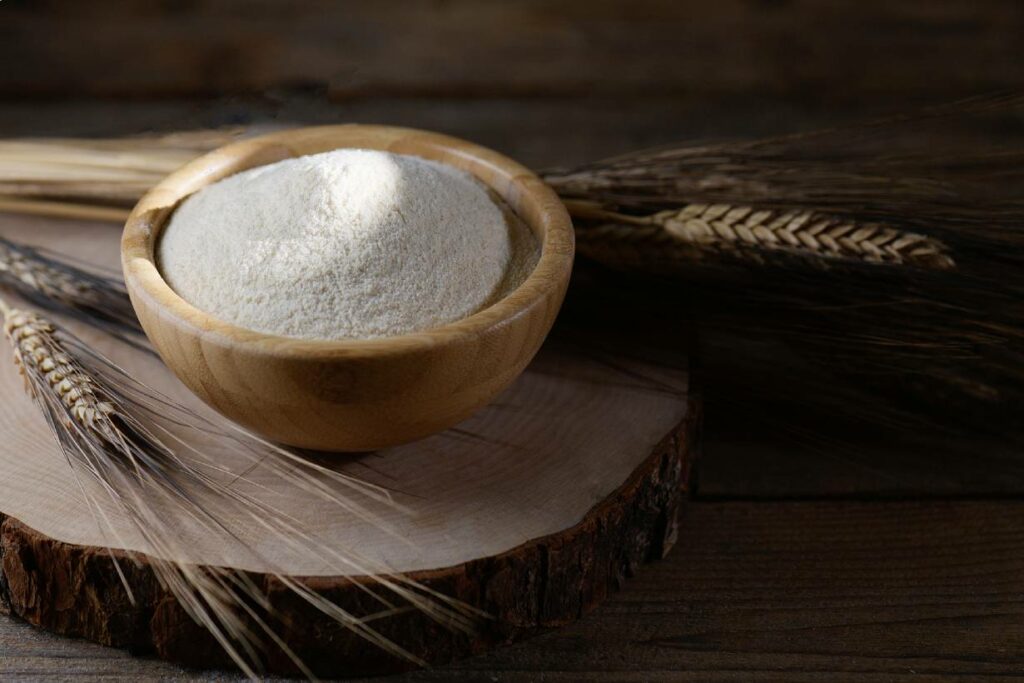
Kamut is the commercial name for khorasan wheat, a grain often referred to as an ‘ancient grain’ due to its distinct properties compared to regular wheat.
In this regard, Kamut is an “‘ancient relative of modern durum wheat,” characterized by larger grains and higher nutrient content. The name ‘Kamut’ was trademarked for khorasan wheat in 1990 (1).
Although the exact origins of Kamut are unknown and subject to debate, some researchers believe it may have originated in ancient Egypt (1).
Kamut flour is a whole-grain flour product made from whole Kamut grains. It has a robust, earthier flavor compared to regular wheat flour, with slight nutty tones.
What Nutritional Values Does Kamut Flour Have?
What does Kamut flour offer nutritionally?
Nutrition Facts
Below are the complete nutritional values of Kamur flour per 186-gram cup.
The nutritional data is sourced from the NCC’s Food and Nutrient Database. The percent daily values have been calculated using the FDA’s published daily values (1, 2).Name Amount Percent Daily Value (% DV) Calories 629 kcal Carbohydrates 131.28 g 47.7% Fiber 20.65 g 73.8% Fat 3.96 g 5.1% Saturated 0.36 g 1.8% Monounsaturated 0.40 g Polyunsaturated 1.16 g Omega-3 0.09 g Omega-6 1.16 g Protein 27.04 g 54.1%
Kamut flour is primarily a source of carbohydrates, while also offering a moderately high amount of dietary fiber and protein.
Vitamins
- Choline: 47.99 mg (9% DV)
- Folate: 79.98 mcg (20% DV)
- Vitamin A: 1.01 mcg (<1% DV)
- Vitamin B1 (thiamin): 1.05 mg (88% DV)
- Vitamin B2 (riboflavin): 0.34 mg (26% DV)
- Vitamin B3 (niacin): 11.86 mg (74% DV)
- Vitamin B5 (pantothenic acid): 1.77 mg (35% DV)
- Vitamin B6 (pyridoxine): 0.48 mg (28% DV)
- Vitamin B12 (cobalamin): 0 mcg (0% DV)
- Vitamin C: 0 mg (0% DV)
- Vitamin D: 0 mcg (0% DV)
- Vitamin E: 1.13 mg (7.5% DV)
- Vitamin K: 3.35 mcg (3% DV)
Kamut flour is a notable source of B vitamins, which play a crucial role in energy production and various other functions within the body (3).
Minerals
- Calcium: 40.92 mg (3% DV)
- Copper: 0.94 mg (104% DV)
- Iron: 7.01 mg (39% DV)
- Magnesium: 241.80 mg (58% DV)
- Manganese: 5.09 mg (221% DV)
- Phosphorus: 677.03 mg (54% DV)
- Potassium: 749.57 mg (16% DV)
- Selenium: 151.59 mcg (276% DV)
- Sodium: 9.30 mg (<1% DV)
- Zinc: 6.84 mg (62% DV)
Kamut flour contains significant levels of selenium, manganese, and copper. These roles have essential roles in the body:
- Selenium contributes to good immune health (4).
- Manganese helps protect the body against damage and aids in energy production (5).
- Copper plays a key part in making blood vessels and connective tissues, as well as in the maintenance of the nervous and immune systems (6).
Potential Health Benefits of Kamut Flour
The existing research on Kamut flour, unfortunately, remains limited in scope. Nevertheless, several studies have explored the potential health effects of Kamut.
In the following sections, we will delve into the available scientific research to explore the potential benefits that Kamut flour may offer.
Kamut flour significantly improves metabolic risk factors
Interestingly, some research suggests that Kamut may have positive effects on cardiovascular metabolic risk factors.
In a randomized controlled crossover trial involving 22 healthy adults, participants were split into two groups. One group consumed bread, pasta, and crackers made from Kamut flour (intervention), while the other group consumed semi-whole-grain wheat (control) versions for eight weeks. After this period, there was an eight-week washout period where participants were instructed to eat their normal habitual diet. Then, the groups switched groups for another eight weeks (7).
The participants were provided with these foods and were not allowed to eat any other grain-based products.
Blood measurements of various health markers were taken at the end of each eight-week period.
Overall, the study found that Kamut led to a 4% reduction in total cholesterol and a 7.8% decrease in low-density lipoprotein cholesterol (LDL-C). Furthermore, improvements were observed in blood potassium and magnesium levels, there was a slight reduction in blood glucose, and a decrease in markers of inflammation (7).
One limitation of this study was the small number of participants, which was only twenty-two.
In this regard, confirmation from further research with a larger participant group would provide stronger evidence of these benefits.
In a similar randomized crossover trial conducted in 2013, Kamut was found to lower the risk profile of patients with type 2 diabetes when compared to regular wheat. This was evidenced by reductions in total and LDL cholesterol, as well as lower insulin and blood glucose levels (8).
Kamut and inflammatory markers
A small randomized crossover pilot study was conducted involving twenty young basketball players who were divided into two groups. Each group consumed either Kamut flour products or semi-whole-grain wheat products for four weeks. They then had a washout period before switching to the other group’s products for another four weeks.
This study revealed that the consumption of Kamut products led to a significant reduction in monocyte chemoattractant protein (MCP-1) levels in the blood (9).
MCP-1 is considered a marker of inflammation and is associated with an increased risk of cardiovascular disease and stroke (10).
Kamut may have benefits for the gut microbiota
In a randomized controlled crossover trial published in 2022, the effect of Kamut compared to regular wheat on gut bacteria composition was investigated. The study involved twenty patients with fibromyalgia, a condition characterized by chronic pain, fatigue, and other symptoms (11, 12).
The results of the trial revealed that the Kamut diet brought about positive changes in the gut microbiota. These changes were characterized by an increased prevalence of candidatus Saccharibacteria and Actinobacteria, which are believed to have beneficial health effects. In contrast, levels of Enterococcaceae decreased.
Interestingly, a correlation was found between higher levels of Saccharibacteria and Actinobacteria and an improvement in several fibromyalgia symptoms. Additionally, elevated levels of these bacteria were associated with lower symptom severity.
This study followed a previous randomized controlled trial conducted two years earlier, which had demonstrated the benefits of khorasan (Kamut) wheat products for patients with fibromyalgia (13).
Kamut Flour vs. Regular Wheat Flour and Wholemeal Flour
To get a better understanding of the nutritional value of kamut flour, let’s compare it to regular wheat flour and whole-wheat flour in terms of their nutritional profiles.
In order to make a fair comparison, the table below presents the nutritional information per 100 grams for kamut, wheat, and whole-wheat flour.
The nutritional data for kamut flour is sourced from the NCC Food and Nutrient database, while the information for wheat and whole-wheat flour is obtained from the USDA FoodData Central database (1, 2, 14, 15).Nutrient Wheat flour Whole-wheat Kamut flour Calories 364 kcal 340 kcal 337 kcal Carbohydrate 76.3 g 72.0 g 70.58 g Fiber 2.7 g 10.7 g 11.1 g Fat 0.98 g 2.5 g 2.13 g Saturated 0.16 g 0.43 g 0.20 g Monounsaturated 0.09 g 0.28 g 0.21 g Polyunsaturated 0.41 g 1.17 g 0.62 g Omega-3 0.02 g 0.07 g 0.05 g Omega-6 0.39 g 1.09 g 0.57 g Protein 10.3 g 13.2 g 14.54 g Choline – 31.2 mg 25.8 mg Folate, DFE 291 mcg 44.0 mcg 43.0 mcg Vitamin A, RAE 0 mcg 0 mcg 0.54 mcg Vitamin B1 0.79 mg 0.50 mg 0.57 mg Vitamin B2 0.49 mg 0.17 mg 0.18 mg Vitamin B3 5.9 mg 4.96 mg 6.38 mg Vitamin B5 0.44 mg 0.60 mg 0.95 mg Vitamin B6 0.04 mg 0.41 mg 0.26 mg Vitamin B12 0 mcg 0 mcg 0 mcg Vitamin C 0 mg 0 mg 0 mg Vitamin D 0 mcg 0 mcg 0 mcg Vitamin E 0.23 mg 0.71 mg 0.61 mg Vitamin K 0.3 mcg 1.9 mcg 1.80 mcg Calcium 15 mg 34 mg 22 mg Copper 0.14 mg 0.41 mg 0.51 mg Iron 4.64 mg 3.6 mg 3.77 mg Magnesium 22 mg 137 mg 130.0 mg Manganese 0.68 mg 4.07 mg 2.74 mg Phosphorus 108 mg 357 mg 364.0 mg Potassium 107 mg 363 mg 403.0 mg Selenium 33.9 mcg 61.8 mcg 81.5 mcg Sodium 2 mg 2 mg 5.0 mg Zinc 0.7 mg 2.6 mg 3.68 mg
Key differences between kamut flour and wheat flour
- When comparing Kamut flour to regular wheat flour, it’s worth noting that Kamut flour provides considerably higher amounts of fiber and protein. On the other hand, it contains fewer calories and carbohydrates.
- Kamut flour stands out for its higher concentration of essential vitamins and minerals compared to common wheat flour. However, wheat flour provides higher amounts of certain nutrients such as vitamins B1, B2, and iron. It’s important to mention that these nutrients are usually fortified in refined wheat flour.
Key differences: kamut flour and whole-wheat flour
- The calorie and carbohydrate content of Kamut and whole-wheat flour is quite similar. However, kamut flour offers approximately 5% more fiber and 10% more protein than whole-wheat flour.
- In terms of micronutrients, Kamut and whole-wheat flour provide similar amounts. However, there are slight variations in specific vitamins and minerals.
- Kamut flour contains slightly higher amounts of vitamins B1, B2, B3, and B5, as well as copper, iron, phosphorus, potassium, selenium, sodium, and zinc.
- On the other hand, whole-wheat flour provides slightly greater quantities of choline, folate, vitamins B6, E, and K, as well as calcium, magnesium, and manganese.
Is Kamut Flour Gluten-Free?
Given that Kamut flour does not explicitly mention “wheat” in its name, this may raise questions regarding its gluten content.
Kamut flour is derived from an ancient wheat grain and does contain gluten (16).
Consequently, individuals with gluten intolerance or celiac disease should avoid using Kamut flour.
For non-gluten-containing flour, almond flour, coconut flour, or lupin flour might be worth consideration.
Potential Downsides of Kamut Flour
As with any other variety of flour, kamut flour can have benefits, and it may also have downsides.
Here are some of the potential drawbacks of Kamut flour:
- It is generally harder to find.
- Kamut flour is more expensive than whole-wheat and regular wheat flour.
- The flour contains gluten, so it is unsuitable for gluten-free diets.
How To Use Kamut Flour
Here are some ways to use Kamut flour alongside any special considerations:
- For baking: Kamut flour can be a direct replacement for regular wheat flour at a one-to-one ratio. This means that if a recipe calls for 50 grams of wheat flour, you can replace it with 50 grams of Kamut flour. However, it is important to be aware of the taste differences; similar to whole-wheat flour, Kamut flour has an earthy and nutty flavor profile.
- As a thickener: Kamut flour can be used as a thickener for curries, sauces, soups, and stews. Gradually add Kamut flour to the recipe until you achieve the desired thickness or consistency.
- Breadcrumbs: Kamut flour offers a more flavorful and nutritious alternative to wheat flour for making breading.
- Smoothies: adding a tablespoon of Kamut flour to a smoothie could be useful for someone wanting more calories and a greater fiber and protein provision.
Final Thoughts
Kamut flour offers a combination of benefits and drawbacks worth considering.
On the positive side, Kamut flour provides greater nutritional value compared to regular wheat and whole-wheat flour. Some studies also suggest that Kamut may even have specific health benefits and improve health markers when compared to wheat.
That said, it’s important to acknowledge that studies on the benefits of Kamut have certain limitations, primarily due to their small participant numbers. Additionally, Kamut flour tends to be more expensive than other varieties of wheat flour, which is a significant factor to consider for many people.
For those comfortable with the higher cost, Kamut flour may be worth consideration.
However, it is important to note that nutritionally, Kamut flour is not significantly different from common whole-wheat flour.


